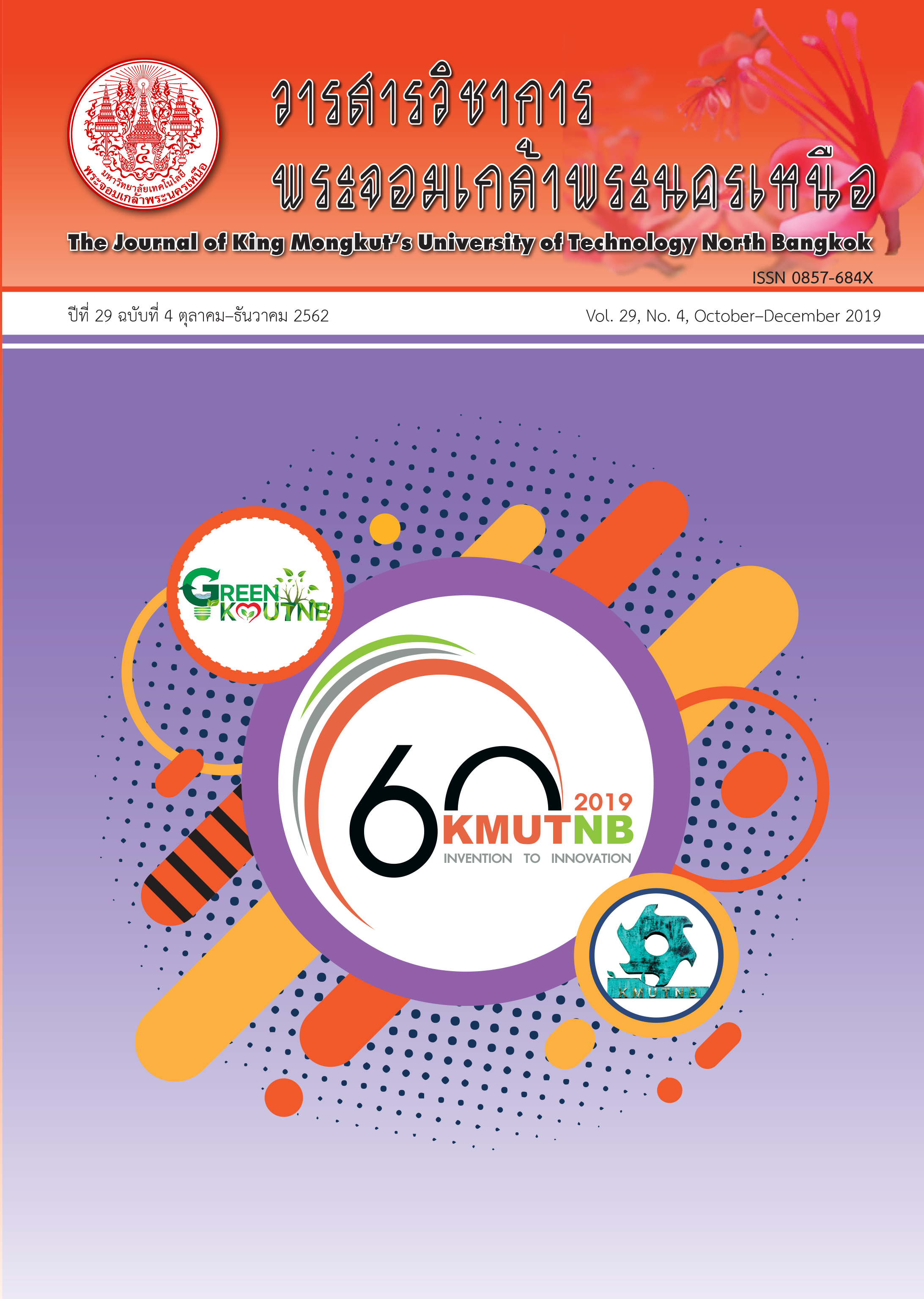ประสิทธิภาพของช่วงความเชื่อมั่นสำหรับค่าเฉลี่ยของการแจกแจงปัวซงภายใต้ข้อมูลจากกระบวนการทำใหม่
Main Article Content
บทคัดย่อ
ข้อมูลเชิงนับพบได้ในหลากหลายสาขาวิชาตั้งแต่การแพทย์จนถึงสังคมศาสตร์ ในการประมาณค่าแบบช่วงสำหรับค่าเฉลี่ยนักวิจัยมีแนวโน้มที่จะสมมติให้ข้อมูลมีการแจกแจงปัวซงซึ่งมีความแปรปรวนเท่ากับค่าเฉลี่ยและระยะเวลาระหว่างเหตุการณ์มีการแจกแจงแบบเลขชี้กำลังเหตุผลที่เป็นไปได้ คือการคำนวณช่วงความเชื่อมั่นสำหรับค่าเฉลี่ยนั้นง่ายและพบได้เกือบทุกโปรแกรมทางสถิติ อย่างไรก็ตาม หากข้อมูลเชิงนับนั้นมาจากกระบวนการทำใหม่แล้ว ระยะเวลาระหว่างเหตุการณ์ของข้อมูลเชิงนับอาจมีการแจกแจงแบบอื่นๆ ได้ ในงานวิจัยนี้จึงสนใจที่จะศึกษาประสิทธิภาพของช่วงความเชื่อมั่นที่ถูกสร้างขึ้นสำหรับค่าเฉลี่ยของการแจกแจงปัวซงทั้ง 7 วิธี แต่ให้ระยะเวลาระหว่างเหตุการณ์มีการแจกแจงแกมมาหรือไวบูลซึ่งจะให้ข้อมูลจำนวนนับที่มีความแปรปรวนมากกว่าหรือน้อยกว่าค่าเฉลี่ย และยังศึกษาในกรณีที่จำนวนนับมาจากตัวแบบทวินามเชิงลบ ผลการศึกษาโดยสรุป พบว่าค่าของดัชนีวัดการกระจาย (ID) จะสามารถบอกประสิทธิภาพของช่วงความเชื่อมั่นล่วงหน้าได้โดยหาก ID มีค่าไม่เกิน 1 ช่วงความเชื่อมั่นทุกวิธีจะให้ค่าความน่าจะเป็นคุ้มรวมไม่ต่ำกว่าระดับความเชื่อมั่นที่กำหนดซึ่ง เท่ากับ 0.95 ในทางกลับกัน เมื่อ ID มีค่ามากกว่า 1 ช่วงความเชื่อมั่นทั้งหมดให้ค่าความน่าจะเป็นคุ้มรวมต่ำกว่าระดับความเชื่อมั่นที่ต้องการ นอกจากนี้ การเพิ่มขึ้นของขนาดตัวอย่างส่งผลต่อค่าความน่าจะเป็นคุ้มรวมเพียงเล็กน้อย
Article Details
บทความที่ลงตีพิมพ์เป็นข้อคิดเห็นของผู้เขียนเท่านั้น
ผู้เขียนจะต้องเป็นผู้รับผิดชอบต่อผลทางกฎหมายใดๆ ที่อาจเกิดขึ้นจากบทความนั้น
References
[2] R. P. Dobrow, Introduction to Stochastic Processes with R. Hoboken, New Jersey: John Wiley & Sons, 2016.
[3] R. Baker and T. Kharrat, “Event count distributions from renewal processes: Fast computation of probabilities,” IMA Journal of Management Mathematics, vol. 29, no. 4, pp. 415–433, 2018.
[4] T. Kharrat, G. Boshnakov, I. G. McHale, and R. Baker, “Flexible regression models for count data based on renewal processes: The countr package,” Journal of Statistical Software, 2018.
[5] B. McShane, M. Adrian, E. T. Bradlow, and P. S. Fader, “Count models based on weibull interarrivals times,” Journal of Business & Economic Statistics, vol. 26, no. 3, pp. 369–378, 2008.
[6] R. Winkelmann, “Duration dependence and dispersion in count-data models,” Journal of Business & Economic Statistics, vol. 13, no. 4, pp. 467–474, 1995.
[7] E. L. Lehmann and P. Romano, Testing Statistical Hypotheses. New York: John Wiley & Sons, 2005.
[8] L. A. Barker, “A comparison of nine confidence intervals for a Poisson parameter when the expected number of events is ≤ 5,” The American Statistician, vol. 56, no. 2, pp. 85–89, 2002.
[9] M. Tanusit, “Two-Side confidence intervals for the Poisson means,” International Journal of Modeling and Optimization, vol. 2, no.2, pp. 589–591, 2012.
[10] M. Khamkong, “Approximate confidence interval for the mean of Poisson distribution,” Open Journal of Statistics, vol. 2 no. 2, pp. 204–207, 2012 (in Thai).
[11] Y. Guan, “Moved score confidence intervals for means of discrete distributions,” American Open Journal Statistics, vol. 1, pp. 81–86, 2001.
[12] G. Upton and I. Cook, Oxford Dictionary of Statistics, 2nd ed. Oxford University Press, 2006.
[13] R. Sultan and S. P. Ahmad, “Posterior estimates of Poisson distribution using R software,” Journal of Modern Applied Statistical Methods, vol. 11, no. 2, pp. 530–535, 2012.
[14] C. A. Rohde, Introductory Statistical Inference with the Likelihood Function, 1st ed. London: Springer, 2014.
